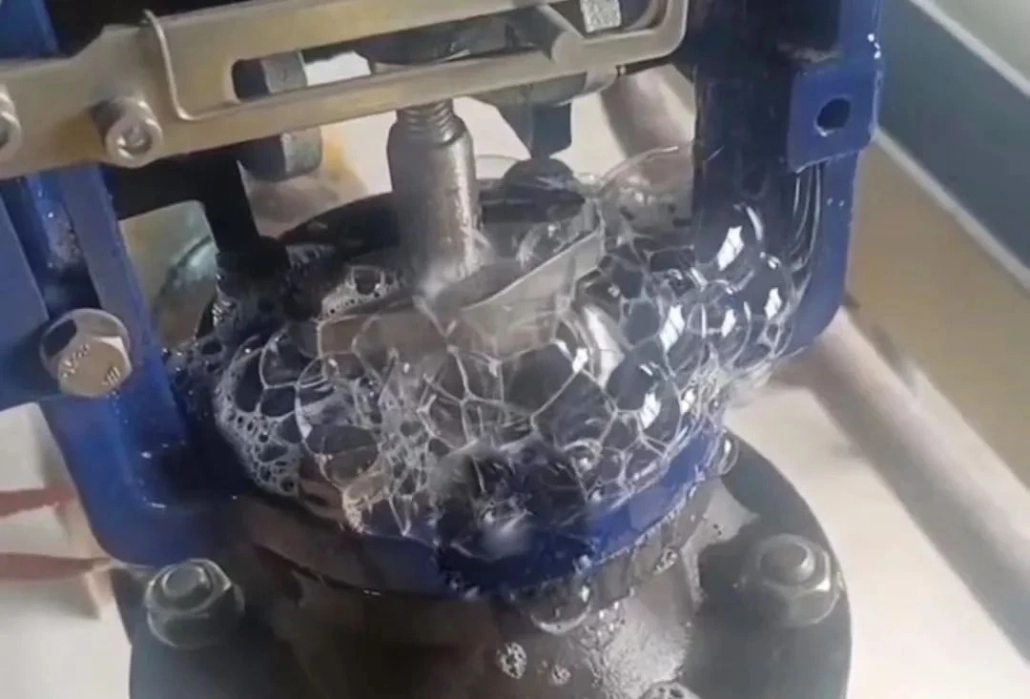Potential Causes and Solutions for Regulating Valve Failures
Overview of Regulating Valve
Regulating valves are an important part of industrial automation control systems and are widely used in various industrial process controls.
Stuck or blocked regulating valves are one of the common problems in industrial automation control systems. When the regulating valve becomes stuck or clogged, it will affect the normal operation of the control system and even cause damage to the equipment. Understanding the causes and treatment methods is of great significance to ensuring the safety of industrial production.
Causes of stuck or clogged
Impurities clog
When impurities and foreign matter stick to the valve core and valve seat, it may be because the particulate matter in the medium deposits on the valve seat and valve core during the flow process, causing them to adhere, and causing valve failure. Especially when there are salts, organic matter, acidic substances, etc. in the medium, these substances may penetrate the valve seat and valve core, exacerbating the adhesion phenomenon. In addition, in high-pressure and high-temperature environments, impurities and foreign matter are more likely to cause damage to the valve core and seat, causing valve failure.
Excessive pressure and wear damage
Excessive pressure and wear and damage to the regulating valve are two issues that require attention. They will directly affect the performance and life of the regulating valve, and then affect the normal operation of the entire system.
The packing gland is not pressed tightly
If the regulating valve packing gland is not tightened, it may cause leakage and other malfunctions in the regulating valve, affecting the normal operation of the entire system. The specific manifestation is that the medium seeps out from the gap between the packing and the valve stem, which wastes resources and may also cause pollution to the working environment and even cause safety issues.
How to deal with stuck or blocked?
cleaning method
For stuck or blocked regulating valves caused by impurity blockage, cleaning methods can be used to deal with them. First, close the inlet and outlet valves of the regulating valve, and then use a cleaning agent to clean the regulating valve. After cleaning, rinse it with clean water, and finally open the inlet and outlet valves to allow the regulating valve to resume normal operation.
External flushing method
When ordinary valves are used to regulate some media that are prone to sedimentation and contain solid particles, the orifice and guide are often blocked. The flushing gas and steam can be externally connected to the bottom plug of the lower valve cover. When the valve is clogged or stuck, open the external gas or steam valve to complete the flushing work without moving the regulating valve, allowing the valve to operate normally.
How to install pipe filters
For small-diameter control valves, especially ultra-small flow control valves, the throttling gap is extremely small, and there should be no trace of slag in the medium. In case of blockage in this situation, it is best to install a filter on the pipe in front of the valve to ensure the smooth passage of the medium.
For regulating valves with a positioner, the positioner does not work properly and the air path orifice is clogged. This is the most common fault.
Therefore, when working with a positioner, the air source must be properly handled. The usual method is to install an air filter pressure-reducing valve on the air source pipeline in front of the positioner.
Increasing the throttling gap method
For example, solid particles in the medium or welding slag and rust that have been washed away in the pipeline cannot pass through the throttling opening, causing problems such as blockage and jamming. You can use a throttling piece with a large throttling gap – the throttling area is open. Because the throttling area of valve cores and sleeves such as windows and openings is concentrated rather than circumferentially distributed, faults can be easily eliminated.
If it is a single or double-seat valve, the plunger-shaped valve core can be changed to a “V”-shaped port valve core, or it can be changed to a sleeve valve, etc. For example, in a chemical plant, a double-seat valve often gets stuck. After it was recommended to use a sleeve valve, the problem was immediately solved.
media flushing
The medium’s scouring energy is used to scour and take away things that are easy to precipitate and block, thereby improving the anti-blocking function of the valve.
Common methods are:
① Convert it to flow-closed type;
②Adopt streamlined valve body;
③ Place the throttle at the most severe erosion point. When using this method, attention should be paid to improving the erosion resistance of the throttle material.
Straight through to angle method
The straight-through flow is an inverted S flow, with complex flow paths and many dead zones in the upper and lower chambers, providing a place for the medium to settle. With angular connection, the medium seems to flow through a 90°C elbow, with good flushing performance, a small dead zone, and easy design into a streamlined shape. Therefore, when the straight-through regulating valve is slightly blocked, it can be changed to an angle valve.







